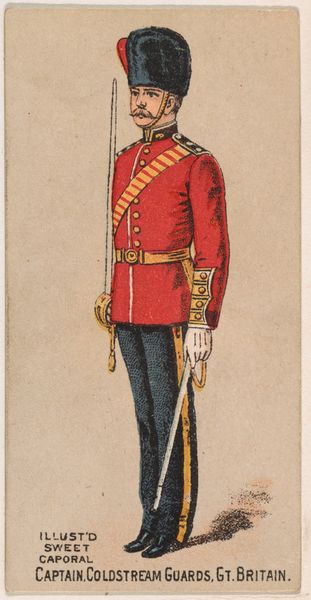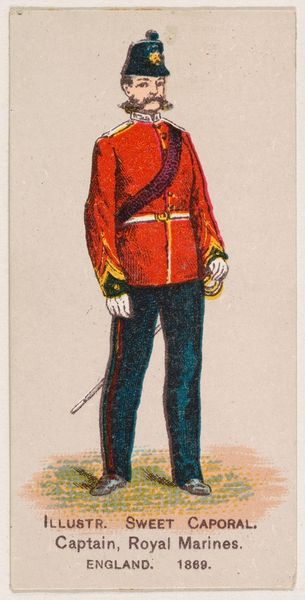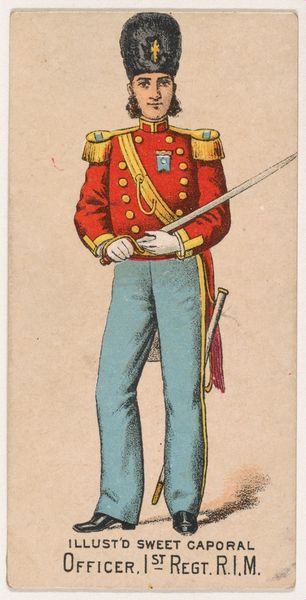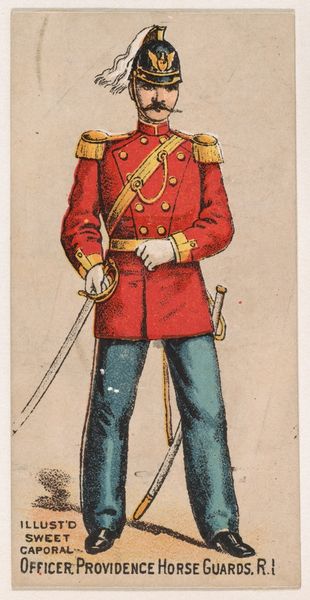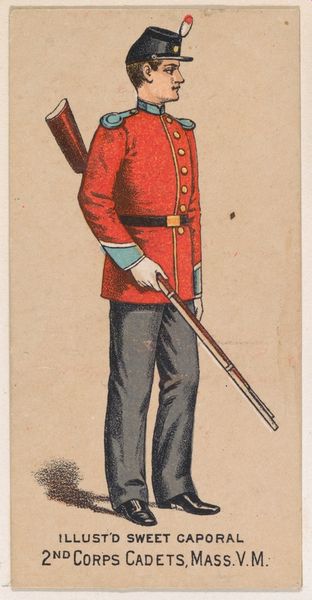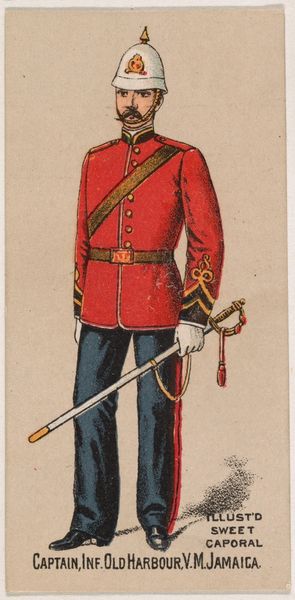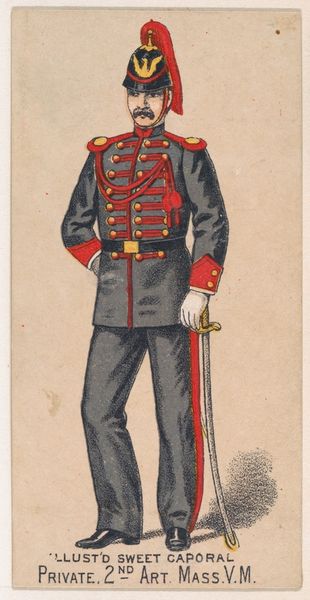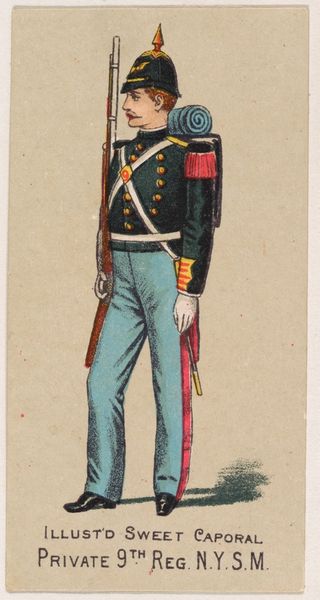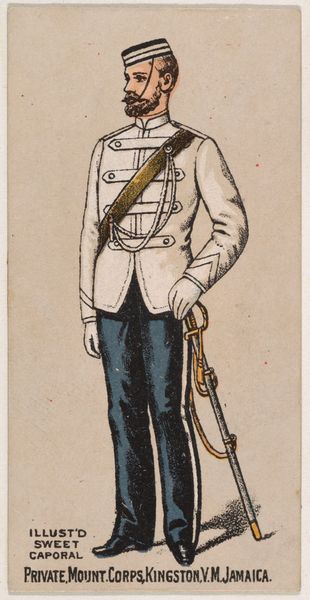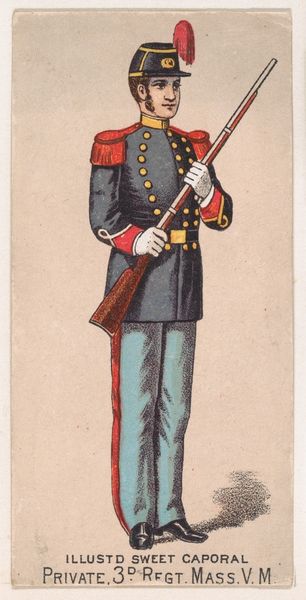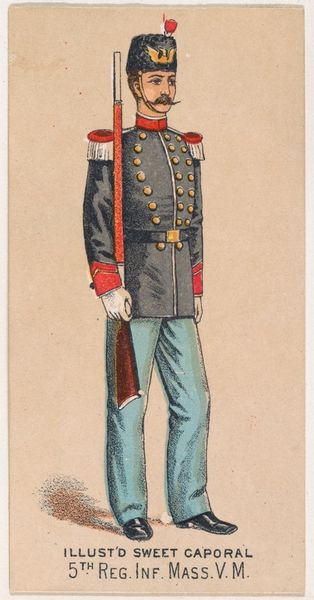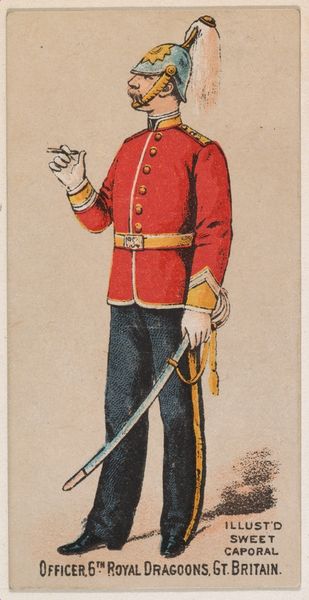
Private, 69th Infantry, Great Britain, from the Military Series (N224) issued by Kinney Tobacco Company to promote Sweet Caporal Cigarettes 1888
0:00
0:00
drawing, print
#
portrait
#
drawing
# print
#
figuration
#
personal sketchbook
#
men
#
genre-painting
Dimensions: Sheet: 2 3/4 × 1 1/2 in. (7 × 3.8 cm)
Copyright: Public Domain
Editor: This is "Private, 69th Infantry, Great Britain," a print from 1888 by the Kinney Tobacco Company. It's one of those cigarette cards. It's a portrait of a soldier, and honestly, it strikes me as quite formal and rigid. What do you make of it? Curator: I see a direct link between artistic production and the forces of industry. The card's existence is inseparable from the tobacco company's marketing strategies and the consumer culture of the late 19th century. These cards weren't just art, they were commodities designed to move other commodities – cigarettes. Look at the mass-produced nature of this print and the role it played in promoting a lifestyle, a brand, even ideals of British military prowess. Editor: So you're less interested in the artistic merit of the portrait itself, and more in its function? Curator: Precisely. What materials were used to create these cards? Who was doing the labor of production? How were they distributed and consumed? These questions help us understand the social and economic context of art in a rapidly industrializing world. The "high art" of portraiture has been completely democratized into cheap capitalist merchandise. Editor: I guess I hadn't considered it that way. Thinking about it, though, it's a pretty subversive way of getting art into people's hands. They might not have been able to afford proper art, but they got a small piece with their cigarettes. Curator: That's one way of seeing it. Another is how consumer culture appropriated art to enhance profit, manipulating the audience through easily available objects. But what's key is how we trace its impact on people's relationship with labor, ownership, and the very value assigned to an object. Editor: Interesting. So, I guess it’s about challenging what we traditionally see as “art” and examining its broader impact on society? Curator: Exactly. Thinking about these prints as commodities rather than simply art objects opens up a whole new set of questions about power, consumption, and the material world.
Comments
No comments
Be the first to comment and join the conversation on the ultimate creative platform.
